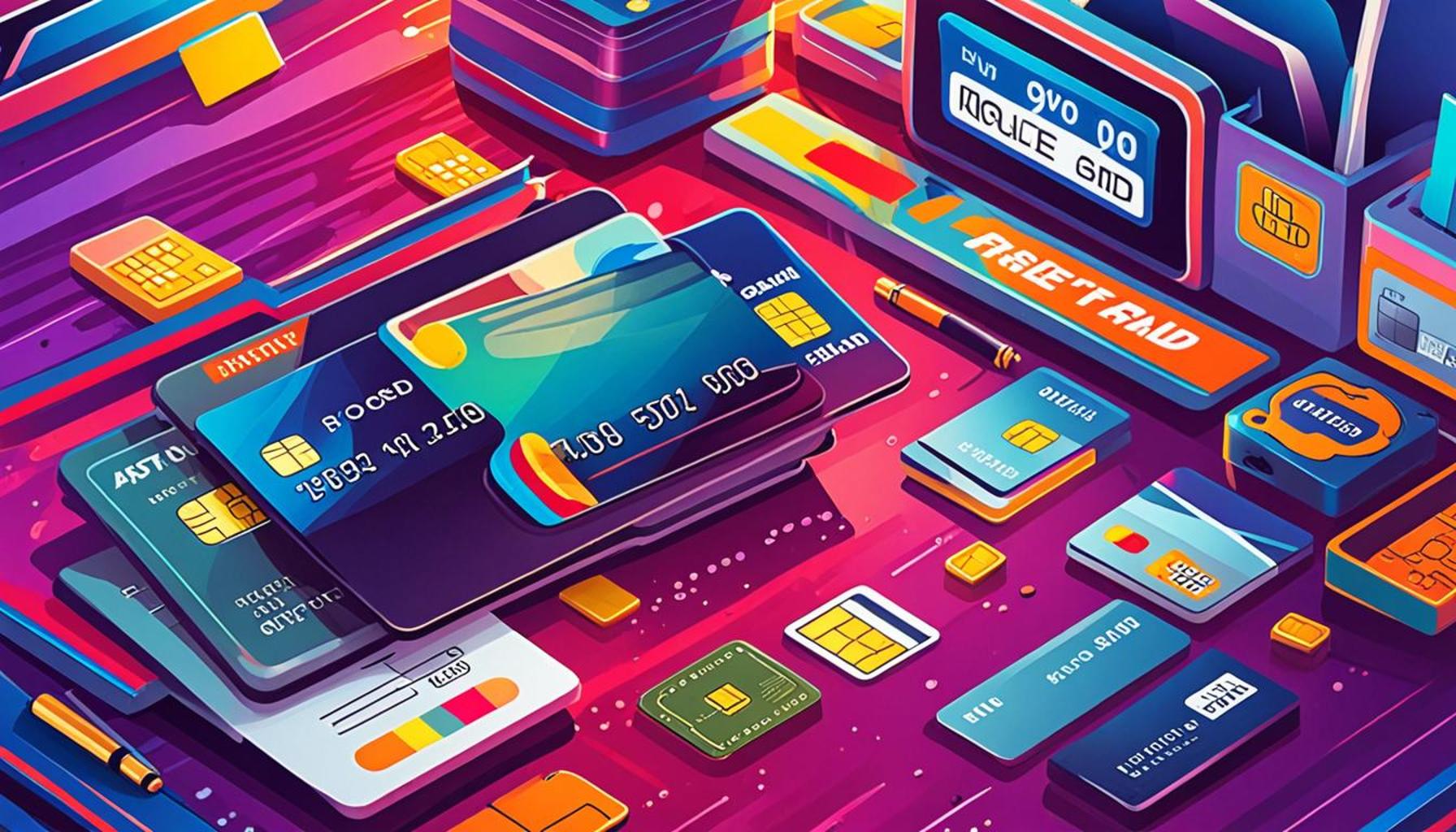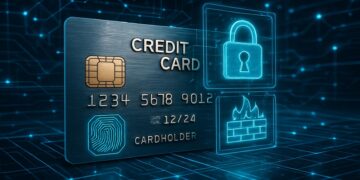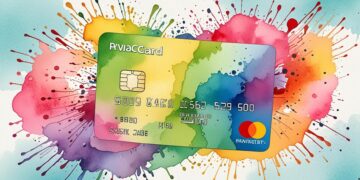How to Protect Yourself from Credit Card Fraud

Understanding Credit Card Fraud
Every year, millions of individuals fall victim to credit card fraud, leading to significant financial losses and emotional stress. Being aware of the various methods used by fraudsters can empower you to take effective steps to protect your finances. By implementing simple, proactive measures, it’s possible to greatly minimize the risk of falling prey to credit card scams.
Types of Credit Card Fraud
Credit card fraud can manifest in several alarming ways. Here are some common examples:
- Stolen Card Information: This is perhaps the most straightforward type of fraud. In this situation, criminals obtain your card details—often through hacking or data breaches—and use them to make unauthorized purchases or withdrawals. For instance, if your card information is acquired, it can lead to someone purchasing luxury items online without your consent.
- Phishing: Phishing scams come in many forms, often utilizing seemingly legitimate emails or websites that mimic trusted organizations. For example, you might receive an email that appears to be from your bank, asking you to click a link to confirm your account details. If you provide your information, it gets into the hands of thieves ready to exploit it.
- Card Skimming: This sophisticated method involves the use of tiny devices placed on ATMs or pay terminals. These devices capture the information from the magnetic stripe of cards when you swipe them. For instance, if you unknowingly use a compromised ATM that has been rigged with a skimmer, your card data can be stolen, potentially leading to financial devastation.
To effectively guard against these threats, it is essential to remain vigilant and informed. Implementing a few protective measures can make a significant difference in safeguarding your finances. Here are key strategies:
- Regular Monitoring: Make it a routine to check your bank and credit card statements frequently for any unusual transactions. Catching unauthorized purchases early can help you report them immediately, reducing potential losses.
- Use Secure Passwords: Crafting strong, unique passwords for your online accounts is critical. A mix of uppercase and lowercase letters, numbers, and special symbols can enhance security. Avoid using easily guessed pieces of information, such as birthdays or names.
- Shred Documents: Disposing of sensitive paperwork carelessly can invite trouble. Instead, invest in a shredder to destroy old bank statements, credit card offers, and other documents containing personal information to help prevent identity theft.
By understanding the risks involved and taking proactive steps, you can safeguard your financial information from fraudsters. The more informed you are about the various tactics used in credit card fraud, the better equipped you’ll be to protect yourself and your assets. Remember, vigilance is key in this ever-evolving digital landscape, and maintaining good financial hygiene can help keep your hard-earned money safe.
CHECK OUT: Click here to explore more
Proactive Strategies for Safeguarding Your Credit Card Information
In our technology-driven world, the security of your credit card information has become a crucial aspect of personal finance management. With the rise of online shopping and digital transactions, it is essential to adopt proactive strategies to minimize your risk of credit card fraud and identity theft. By implementing simple yet effective measures, you can significantly better your financial security and safeguard your assets.
- Never Share Your Information: Always maintain a protective stance regarding your credit card details. Even if you trust the person, sharing sensitive information can lead to unexpected dangers. For example, suppose you receive a phone call from someone claiming to be from your bank asking for your credit card number. You may think you are helping by offering your details, but that could be a fraudster when, in fact, legitimate banks will never ask for such information over the phone. Instead, if you need assistance, call the bank directly using a number you know is legitimate.
- Utilize Two-Factor Authentication: Protecting your online accounts with two-factor authentication (2FA) creates an additional barrier against unauthorized access. When you log into your bank or shopping sites, you may be prompted to enter a code sent to your mobile device. This means even if your password falls into the wrong hands, the thief would still be unable to access your account without that second piece of information. As an example, services like Google, Amazon, and most banking institutions provide this feature, enhancing your protection significantly.
- Be Cautious With Public Wi-Fi: While it may be tempting to connect to public Wi-Fi networks at coffee shops or airports, doing so can expose your personal information. These networks can be breeding grounds for hackers, who can easily intercept data if you’re accessing sensitive accounts or making purchases. Instead, consider using a Virtual Private Network (VPN) when you must use public Wi-Fi, or wait until you have a secure connection at home to conduct any financial transactions.
- Stay Updated: Keeping your devices updated is crucial in warding off new threats. Software developers regularly release updates to fix vulnerabilities. For instance, continuously updating your operating system, internet browser, and antivirus software helps ensure you’re protected against the latest cyber threats. It’s good practice to set your devices to update automatically so that you never miss crucial security patches.
- Use Your Credit Card Wisely: Be discerning about the payment method you choose for online purchases. Generally, credit cards offer superior fraud protection compared to debit cards. Many credit cards come equipped with features like zero liability, meaning you won’t be held accountable for unauthorized charges if you report them quickly. For example, if you notice a suspicious transaction on your credit card statement, you can dispute it easily without risking your bank funds, unlike with a debit card, which draws directly from your checking account.
Implementing these strategies can notably decrease your vulnerability to credit card fraud. Staying informed about best practices for navigating the digital landscape and remaining vigilant in your financial activities will ensure your credit card information remains secure. Remember, consistently employing diligence in how you handle your financial transactions is one of the most effective ways to protect yourself from fraud and identity theft.
CHECK OUT: Click here to explore more
Recognizing Red Flags and Responding to Suspicious Activity
In addition to proactive measures, understanding how to recognize signs of credit card fraud is equally important. By being aware of the red flags and knowing how to respond, you can take swift action to protect your financial well-being. Here are some essential strategies to help you stay alert and informed.
- Monitor Your Statements Regularly: One of the most effective ways to catch fraud early is to review your credit card statements frequently. This practice allows you to spot any unauthorized transactions right away. Keep an eye out for small charges that seem out of place; often, fraudsters will start with a minimal amount to test stolen card information. If you see anything suspicious, report it immediately to your bank.
- Set Up Transaction Alerts: Many banks and credit card companies now offer the option to set up alerts for transactions. You can usually customize these notifications for amounts that exceed a certain threshold, or for international transactions. For example, if you typically only make domestic purchases, an alert for a charge from another country would immediately signal possible fraud, allowing you to act before significant damage occurs.
- Familiarize Yourself with Phishing Scams: Phishing is a type of fraud where attackers send fake emails or messages posing as reputable companies to trick you into providing your personal and financial information. Ensure you recognize legitimate communications from your bank or credit card provider by verifying their contact details. If you receive a suspicious email requesting sensitive information, never click on the links provided; instead, go directly to the bank’s website to log into your account.
- Review Your Credit Report: Regularly checking your credit report is another vital step to protect against identity theft. In the United States, you are entitled to one free credit report from each of the three major credit bureaus (Equifax, Experian, and TransUnion) each year. Reviewing these reports can help you identify any accounts or inquiries that you did not authorize. If you find unfamiliar activity, take action immediately to dispute errors and prevent further fraud.
- Consider Credit Monitoring Services: For added peace of mind, consider enrolling in a credit monitoring service, which can notify you of any changes to your credit report, including new accounts opened in your name. While some services have a cost associated with them, they can save you considerable time and stress should your credit card information be compromised.
- Know the Contact Information for Your Card Issuer: Always keep your credit card issuer’s contact numbers accessible for quick reporting of lost or stolen cards. If your card is misplaced or you suspect fraudulent activity, you should contact your provider immediately to prevent unauthorized use. Most issuers have dedicated fraud hotlines that operate 24/7, so you have the support you need at any time.
By staying vigilant and adopting these additional strategies in recognizing and responding to credit card fraud, you enhance your overall financial security. Remember that being proactive in monitoring your accounts, recognizing potential threats, and responding quickly to any suspicious activity can significantly reduce your risk of becoming a victim of credit card fraud.
CHECK OUT: Click here to explore more
Conclusion
In conclusion, protecting yourself from credit card fraud is a crucial aspect of modern financial management. Fraudsters are continuously finding innovative ways to exploit individuals, making it essential for everyone to be proactive in safeguarding their financial information. One effective method to enhance your security is by incorporating proactive measures into your daily routine. For instance, regularly changing your passwords and ensuring that they are strong and unique for each account is a simple yet powerful step. This added layer of complexity makes it significantly harder for fraudsters to gain access to your accounts.
Always remember to monitor your statements regularly, ideally on a weekly basis. This practice helps you quickly identify unauthorized transactions, which can be a crucial step in mitigating losses. Additionally, setting up transaction alerts through your bank or credit card provider can further protect you. These alerts notify you of any purchase made with your card, allowing you to react promptly if a transaction looks suspicious. For example, if you receive an alert for a purchase you didn’t make, you can report it immediately, potentially reducing the fraud impact.
Staying informed about phishing scams is also essential. These scams often come in the form of emails that appear authentic but aim to trick you into providing personal data. Knowing what to watch out for, like poor spelling or official-looking URLs, can keep you one step ahead. Taking proactive measures like educating yourself on the latest scams can significantly diminish your risk of falling victim to fraud.
Equally important is the regular review of your credit report, which enables you to track unauthorized activities effectively. You can obtain a free copy of your credit report once a year from the three major credit bureaus—Equifax, Experian, and TransUnion—through AnnualCreditReport.com. By analyzing your credit history closely, you can spot inaccuracies or unauthorized accounts that may indicate identity theft.
Additionally, considering credit monitoring services can serve as an invaluable safety net, alerting you to significant changes in your credit file that might indicate fraudulent activity. Furthermore, keeping your credit card issuer’s contact details at hand is vital; in the event of suspicious activity, you’ll be ready to act swiftly to minimize potential damages.
Ultimately, empowerment comes from knowledge and action. Educating yourself about credit card fraud and implementing simple yet effective strategies is essential for protecting not only your finances but also your peace of mind. By remaining proactive and aware, you can confidently navigate your financial landscape, ensuring a more secure future for yourself and your family.

Linda Carter is a writer and financial consultant specializing in personal finance and money management. With years of experience helping individuals and families achieve financial stability and make informed decisions, Linda shares her expertise on the True Metronome platform. Her goal is to empower readers with practical advice and strategies to take control of their finances and build a secure future.





